The Retrofit of USA #415 - Minitransat Prototype
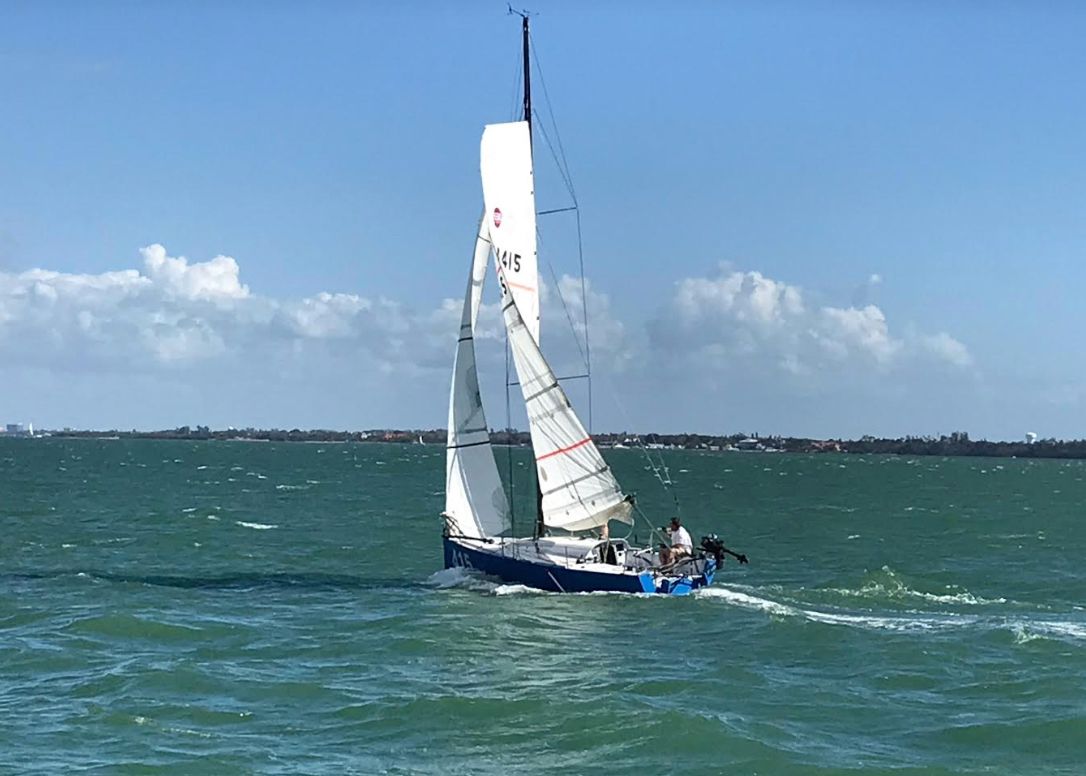
On January 18th, 2018 I purchased and drove home my new sailboat. My Boat is a a Mini. Mini's are specifically designed for single handed offshore sailing.
6.50 Class
For its intended use, racing across the Atlantic Ocean, the Mini 6.50 is very short and beamy, being nearly half as wide as it is long. Its width carries to the stern providing sufficient stability the boat can plane as fast as a motorboat does: Minis are capable of sailing 25 knots. They typically have two connected rudders and a narrow steel or iron fin keel with a lead bulb at the end, with a mast height typically twice the Mini's length. They also have a retractable bowsprit that extends a spinnaker-genoa "kite" two or more meters beyond the bow. Minis must be self-righting when capsized, and this is tested by pushing the end of the mast under water with the vessel's hatches open; this design avoids the possibility of turtling.
There are two divisions: production and prototype. Production boats use approved designs and comparatively conservative materials. The prototype division is more liberal with respect to dimensions, such as keel depth and mast height, and it allows for advanced technology such as "canting" keels and carbon-fibre masts. The prototype class is approximately 7% faster.
Mini Transat 6.50 also known as Transat 650 is a solo transatlantic yacht race, and associated Classe Mini class, that (typically) starts in France and ends in Le Marin bay, Martinique in the Caribbean (previously Salvador, Bahia, Brazil)[1]. The race covers over 4,000 miles with a stop in the Madeira or the Canary Islands. The yachts are very small considering the scope of the race, and are sanctioned by the Miniclasse 6.5 organization and material specifications, which make the mini Transat 650 boat an open design.[2]
The race runs on odd-numbered years, and was most recently completed in 2019. Sailors had to qualify by covering one of two specified 1,000 mile courses along with having 1,500 miles of ocean racing experience, much of it solo.
Quoted from https://en.wikipedia.org/wiki/Mini_Transat_6.50
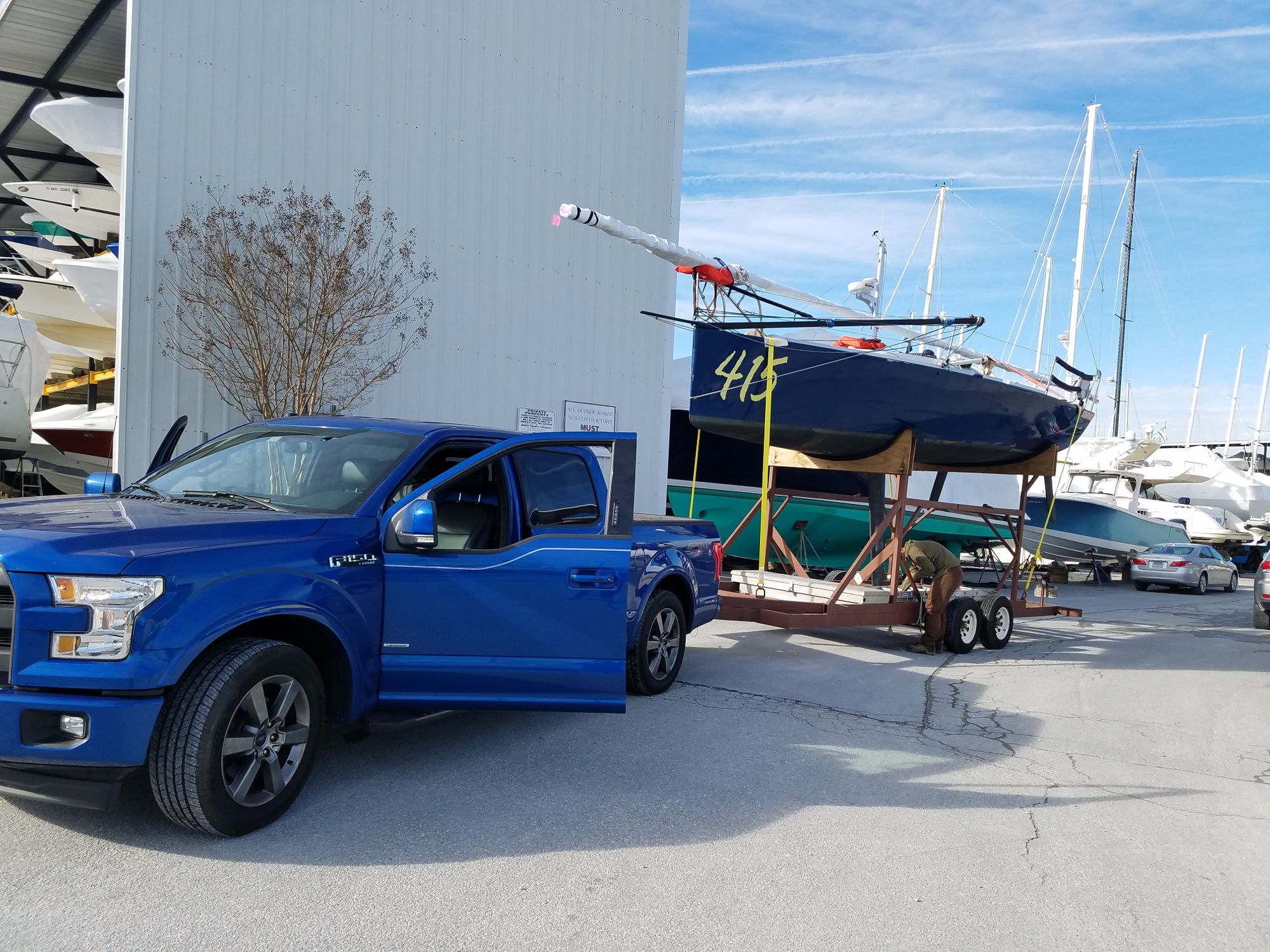
The first step in the repair was smoothing out the bottom. I spent many weekends during the first three months of ownership fixing the bottom.
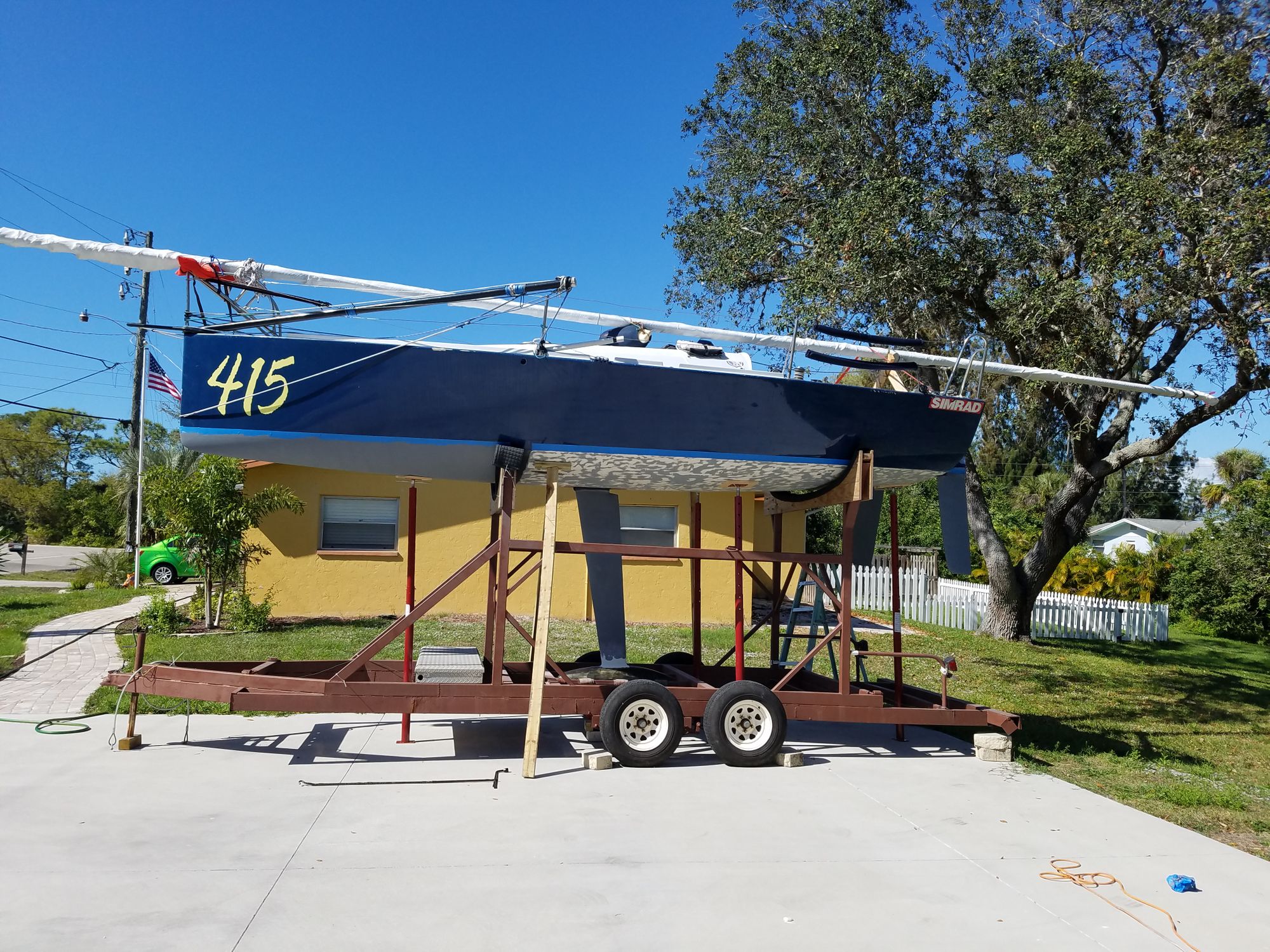
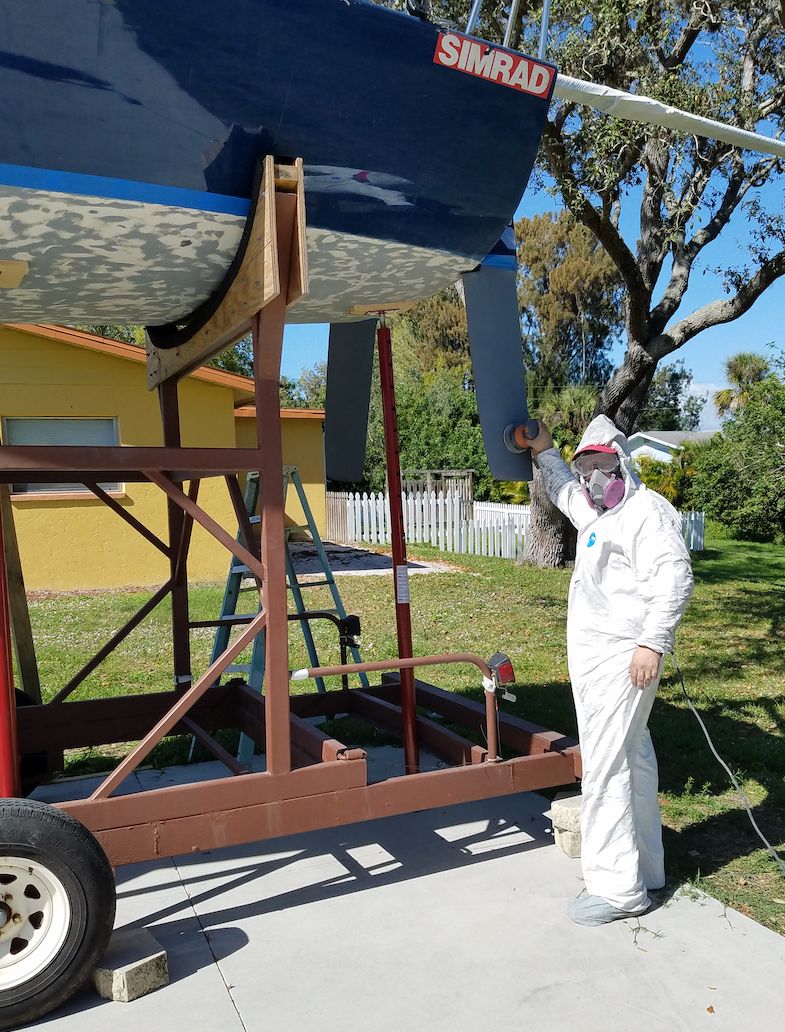
After about three months of sweat and sanding the bottom was finished.
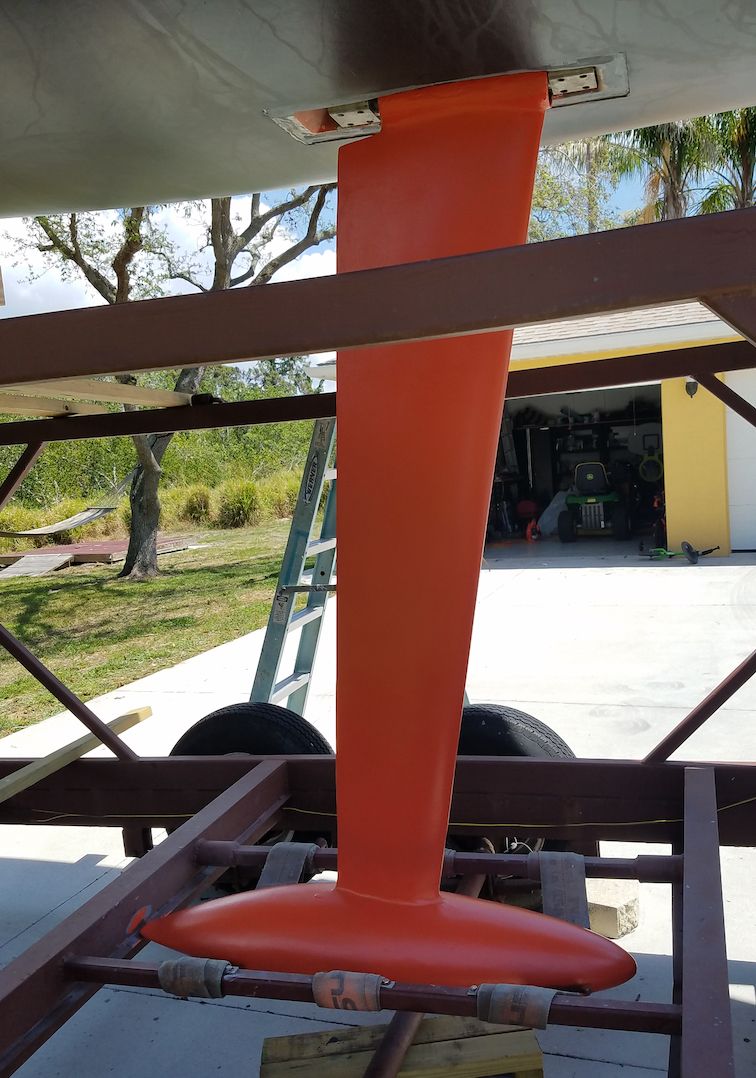

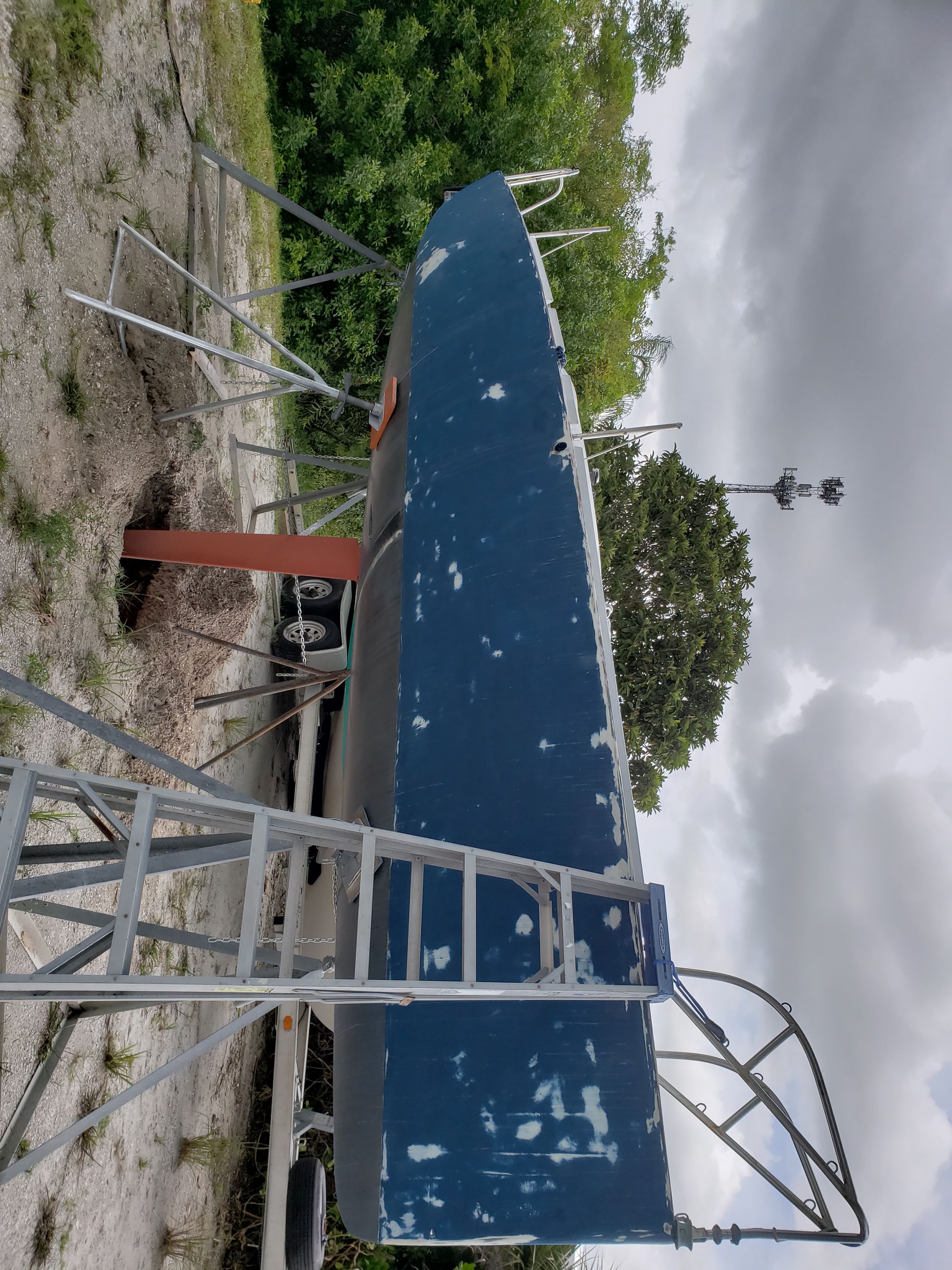
With the bottom in good shape it was time to get the boat painted and have some of the carbon fiber repaired. I took the boat to some professionals to get this done and it was another 3-4 months to complete.
This was really an amazing process. I had the topsides and deck painted.
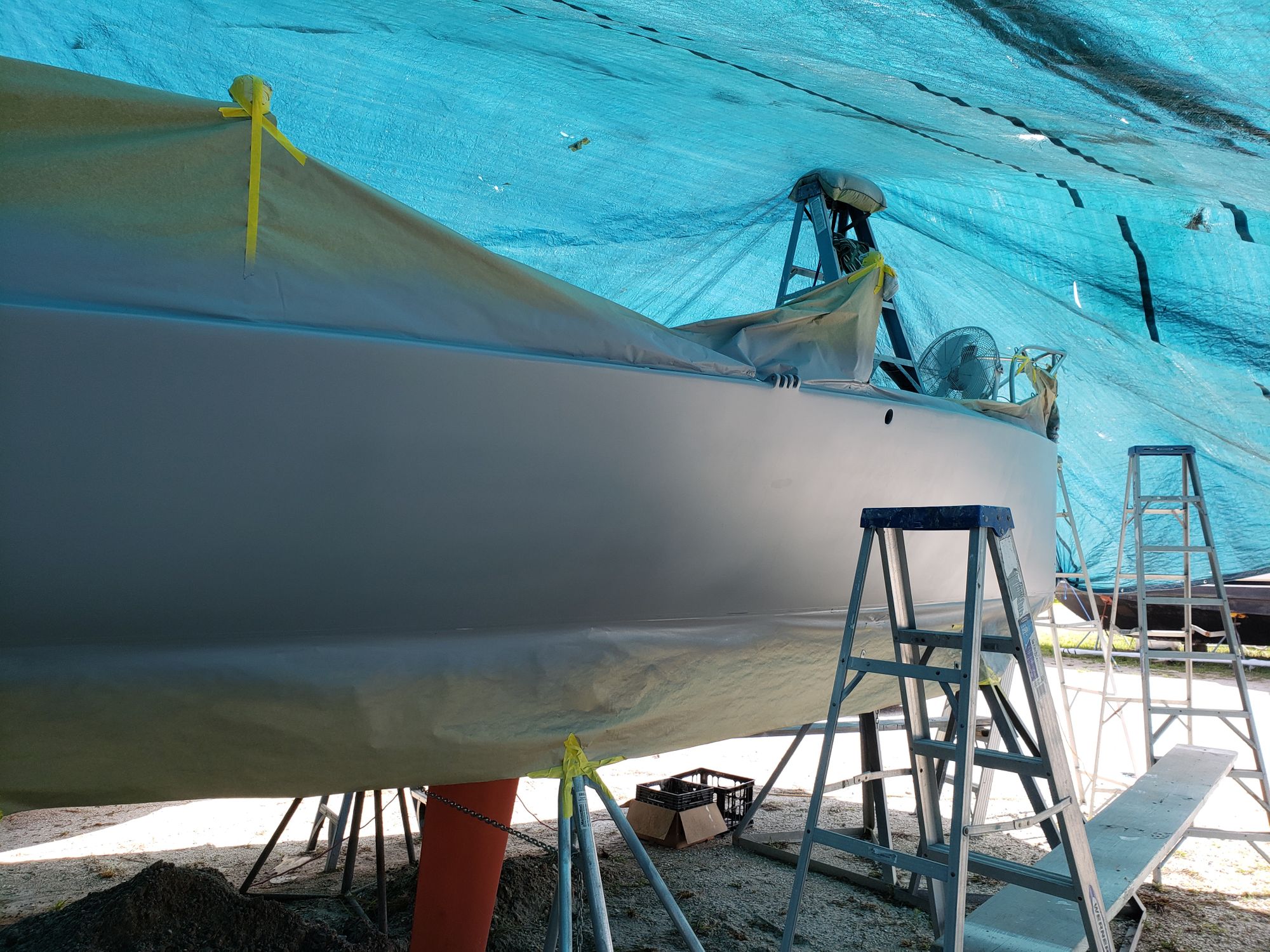
The boat is under a tent. The bottom is masked off and the deck is as well. They primed the hull with the above grey paint. All nicks and dings have been repaired. The hull is lookin amazing.
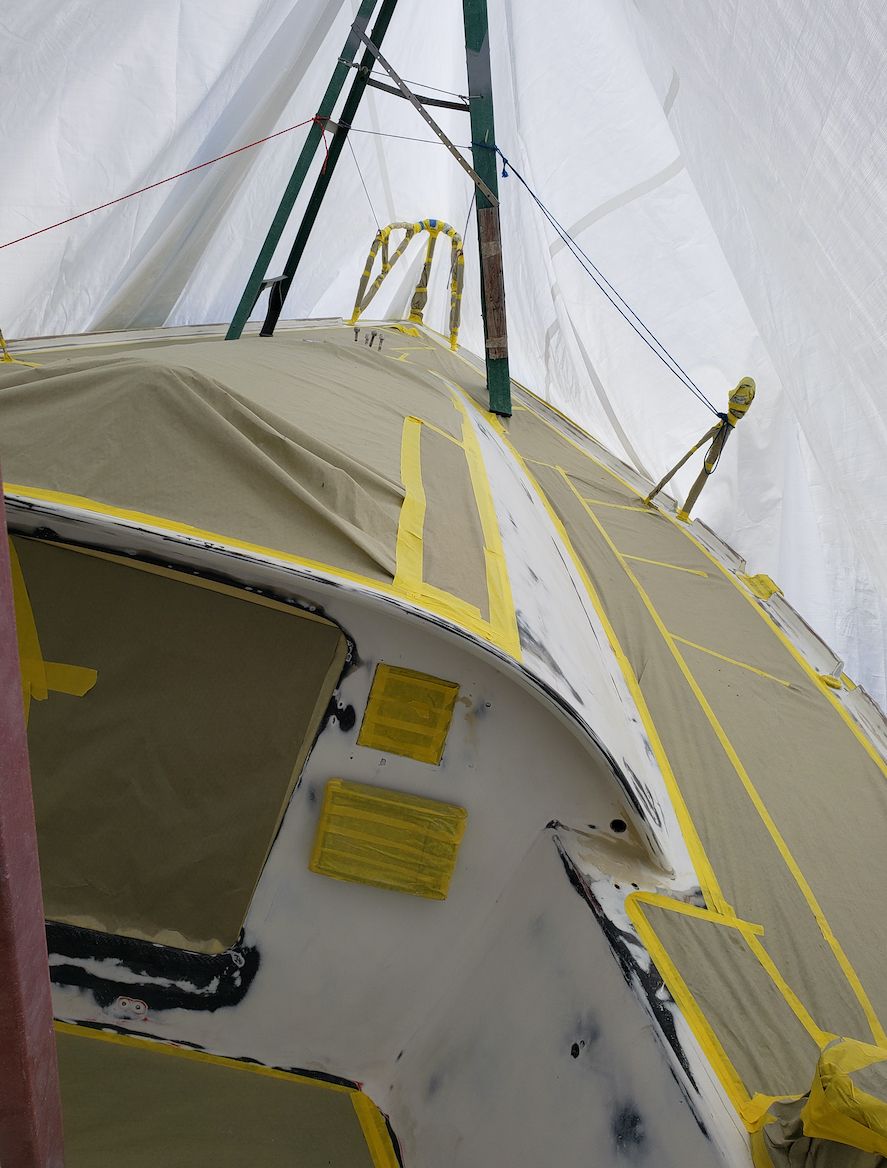
The deck is sanded. The carbon fiber is repaired where needed. Its taking forever but each week little progress.
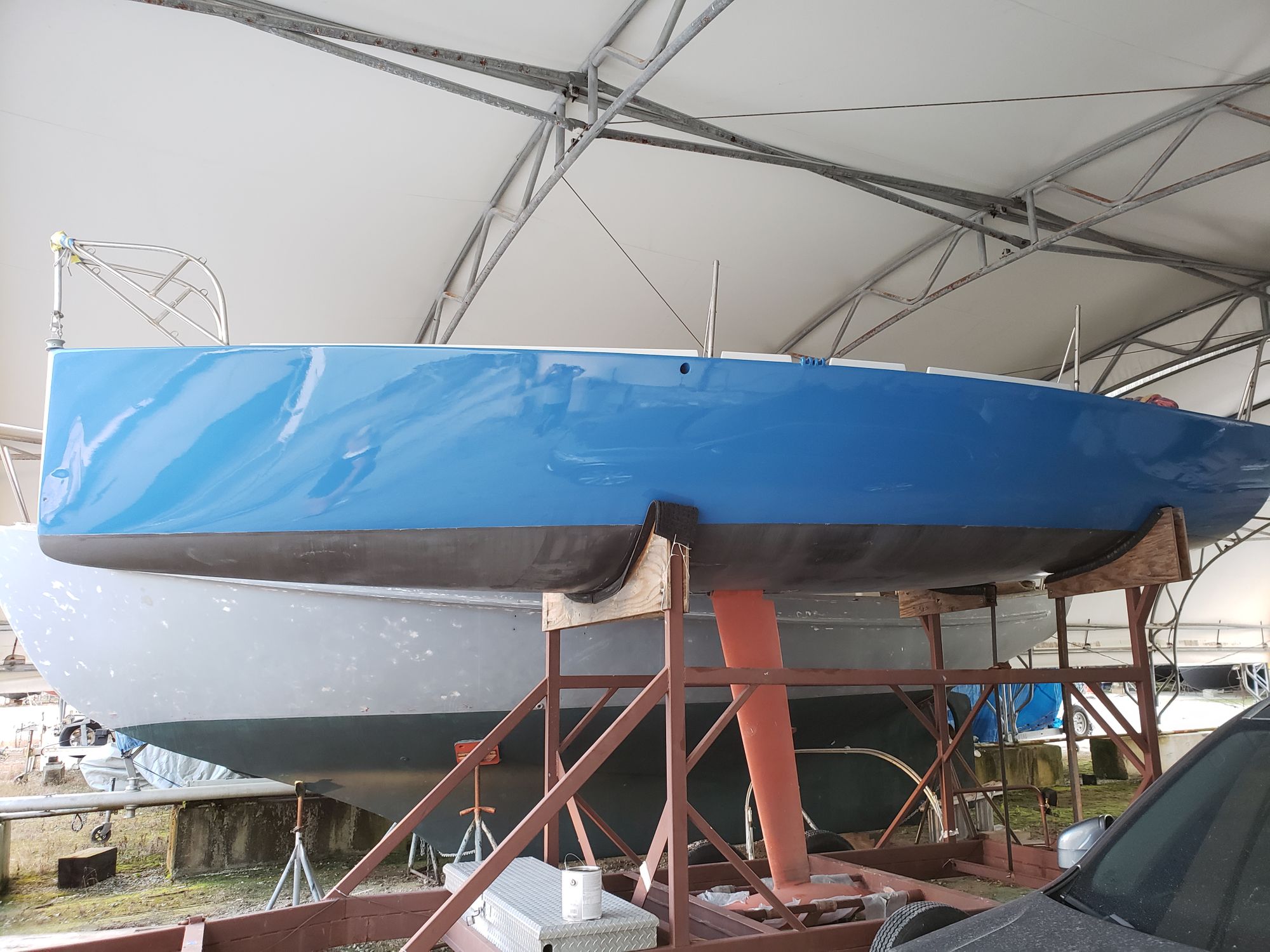
Oh man she is starting to look good.
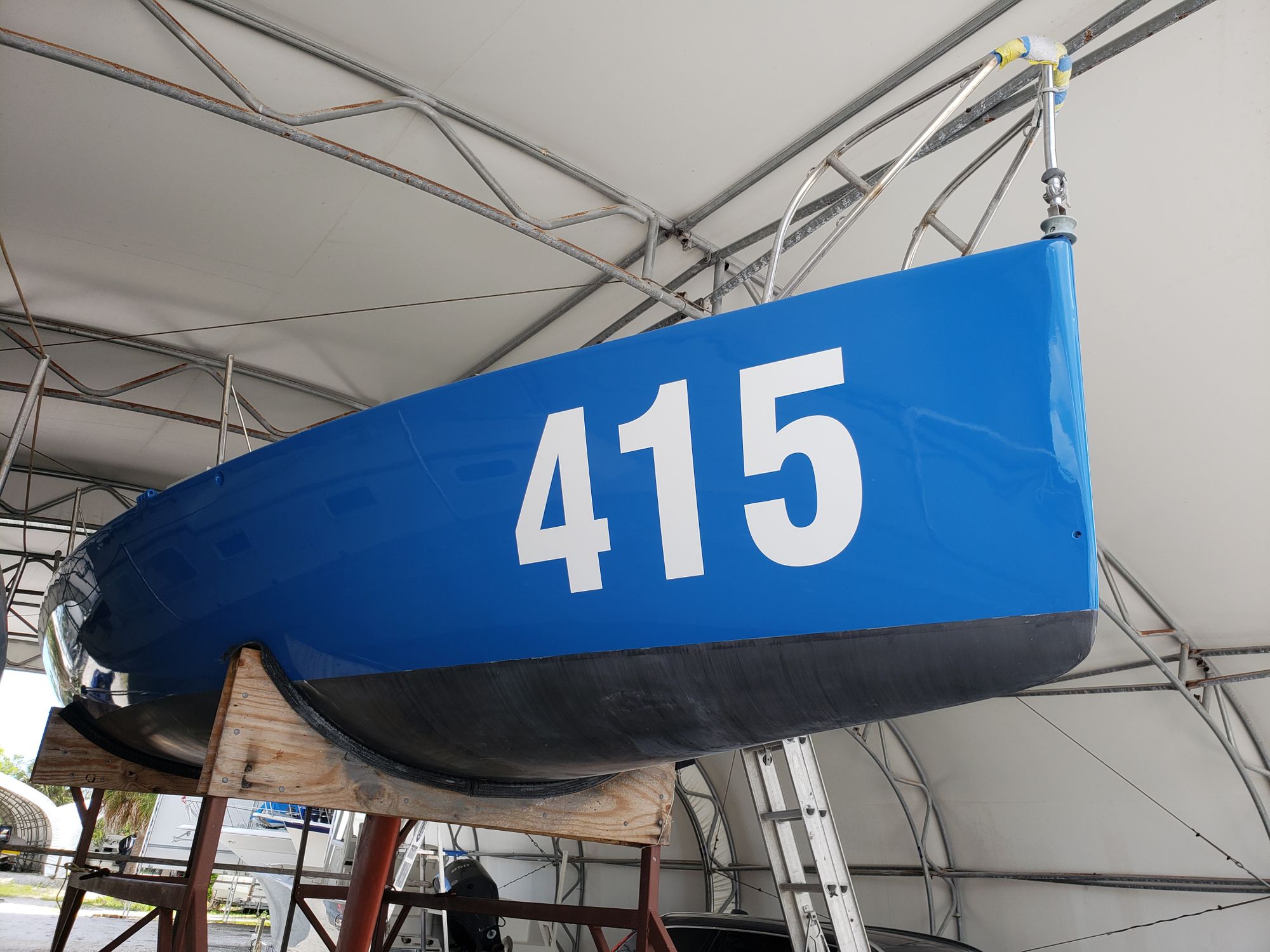
Ok. Im starting to get antsy. I want to go sailing already. So we put her in the water!
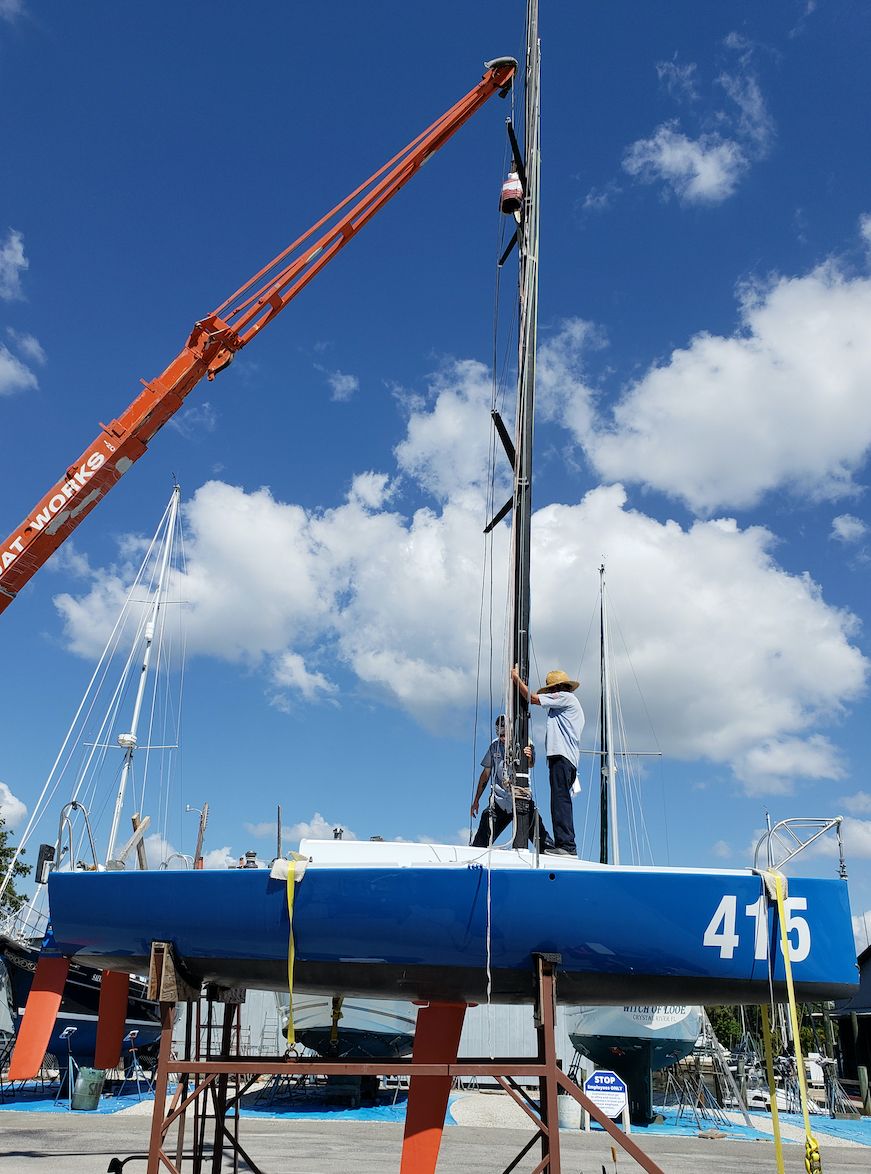
After what seemed forever, USA 415 floats!
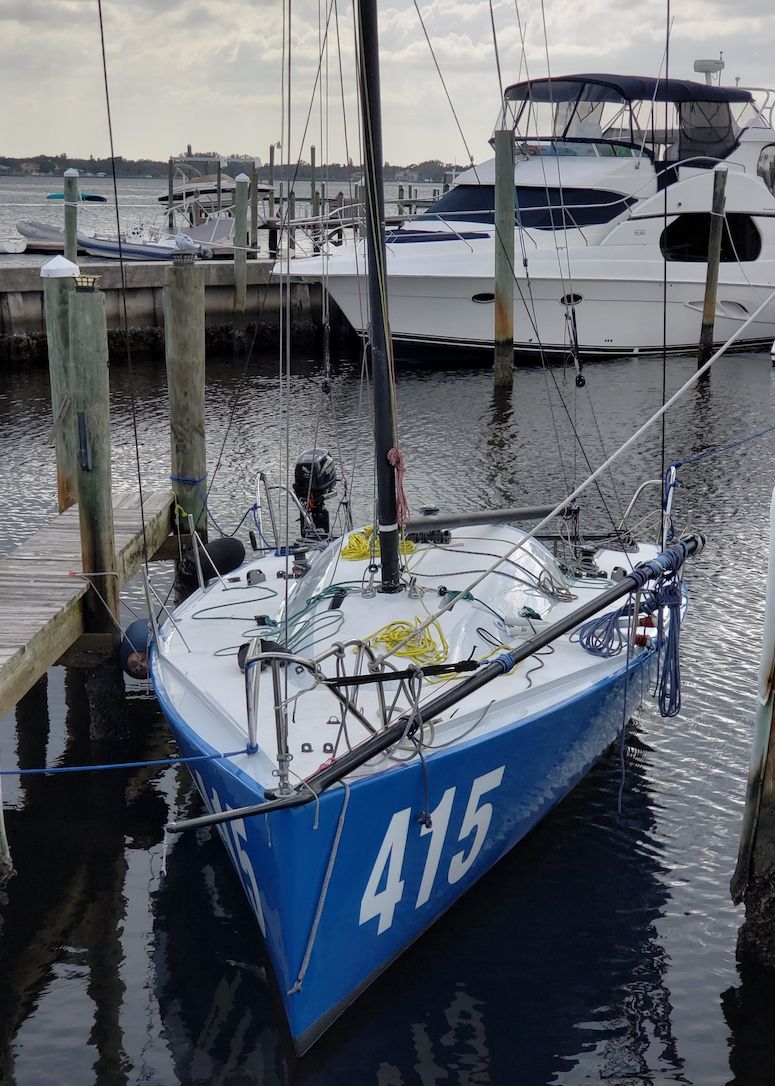
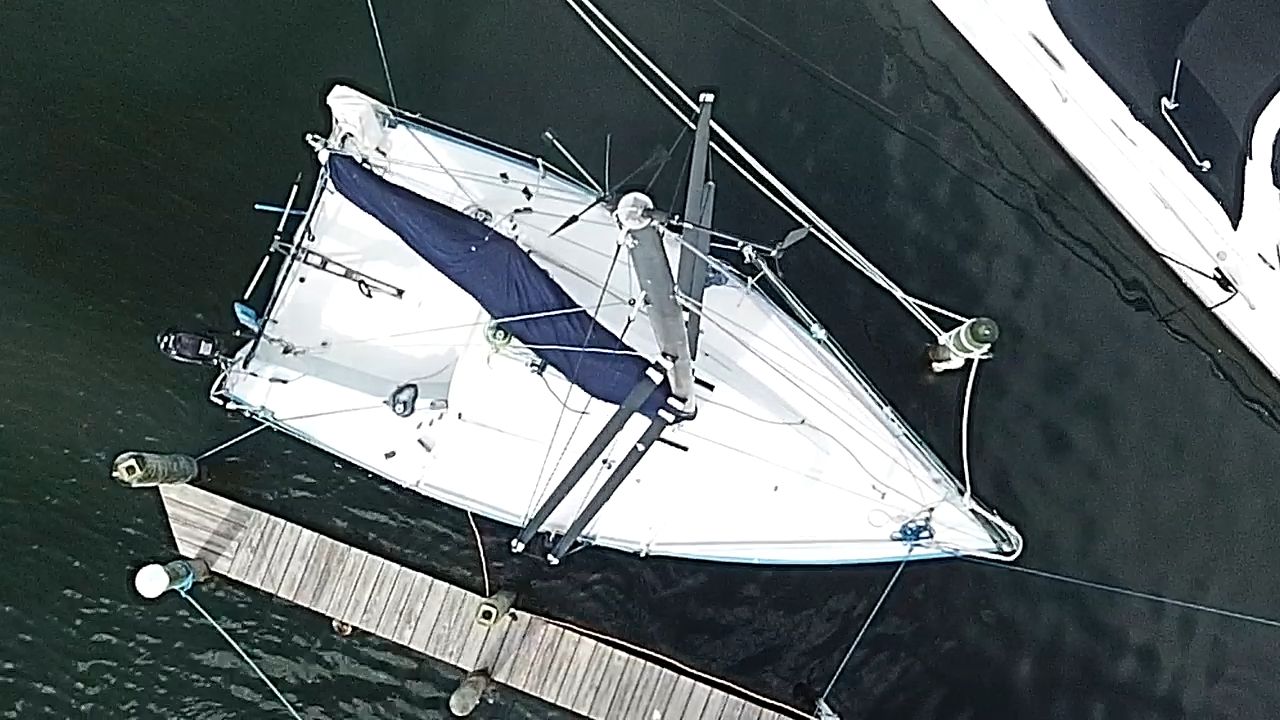
So the boat is in the water. I can sail! I'm super happy but now it's time to start lightening the boat and removing any instruments or wiring that's not needed. I feel like I have spent the last 6 weekends inside the boat crawling around and identifying where every wire in the boat goes.
Organization
I added a few things to the boat to make it cleaner down below. I added a bar for the extra lines.

I also added a few mesh bags inside to stow things.

Batteries, Power and More
I spent several hours at home going through every manual I had for the boat. I wanted to determine the load the instruments were putting on the battery. I put together a spreadsheet and calculated what I was drawing with everything on about 4-7 amps per hour. Well, long story short, I decided to install a Victron Energy meter. (The one in the boat wasn't working.) .
This super cool little device was exactly what I needed. Three hours later I had her installed.
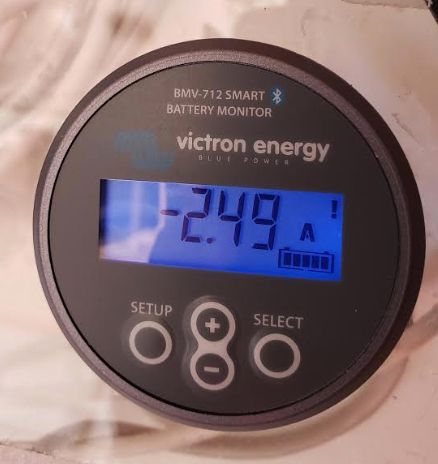
I'm glad I did it too, I was completely off on my spreadsheet. She draws with everything on 2.5 amp hours, thats 60 amp hours a day. Now I'm able to decide on batteries. The boat previously had two 100 amp hour batteries which is great but one was AGM and one was lead acid and combined they weighted just under 160 pounds. Incoming... Google time, I learned about lithium batteries and it is lithium iron phosphate here. I found a Renology battery rated at 170 amp hours and only weighed about 48 pounds! That's a huge weight savings. Dropped another thousand dollars and presto! New battery installed.
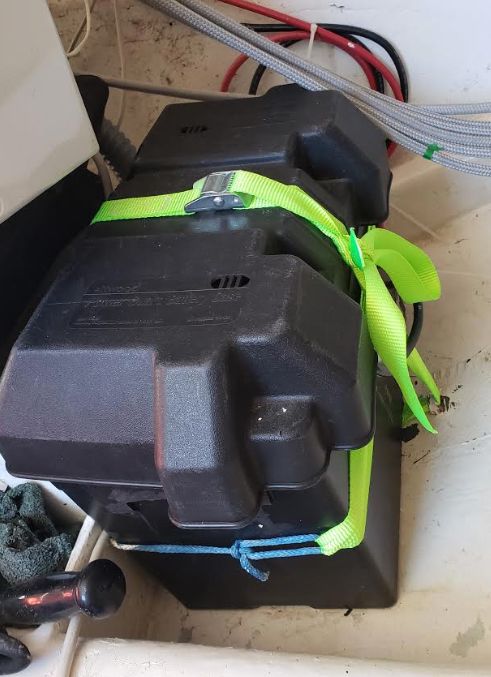
Down to one batter now. How many hours will she last?
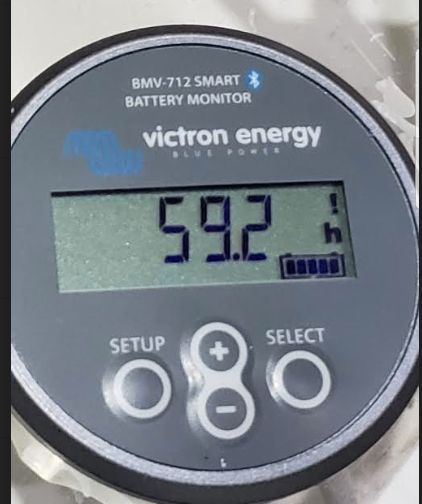
59 Hours on one charge with everything running. I'm happy.
So much wire! I feel like I removed miles of unneeded wire. Look at just some of the stuff I removed:

Instruments, Instruments
I stripped every unused or not functioning instrument in the boat. Previously they were mounted under the cabin sole in some waterproof cases. It turns out that they were not too water proof and I had to replace almost all of them.
NKE
NKE instruments seem to be the choice for solo sailors. What I had that was working was also NKE so I decided to keep with NKE. I bought a new NKE color multi-graphic display, HR wind, Regatta Compass, High Frequency GPS, Box USB with wifi, Gyropilot Remote and transmitter and speed/depth. I purchased and added a EPIRB as well.
I had to get the NKE autopilot (Gyropilot) repaired. While it was working it wasn't putting voltage to the steering arm. So, back to the factory it want and 2 months later returned all shiny and new.
I also added a Raymarine AIS 700 transciever with antenna splitter. http://www.raymarine.com/ais/ais700.html
I added a new VHF Radio, with NMEA 2000 interface. A Garmin VHF 115: https://buy.garmin.com/en-US/US/p/625344
Finally, I wanted a chart plotter, despite recommendations of just using a handheld because its lighter. I ended up purchasing a B&G Zeus3 7 inch plotter.
I mounted all the internal instruments on a piece of plexiglass on the starboard side of the boat. I mounted everything high and out of the way.
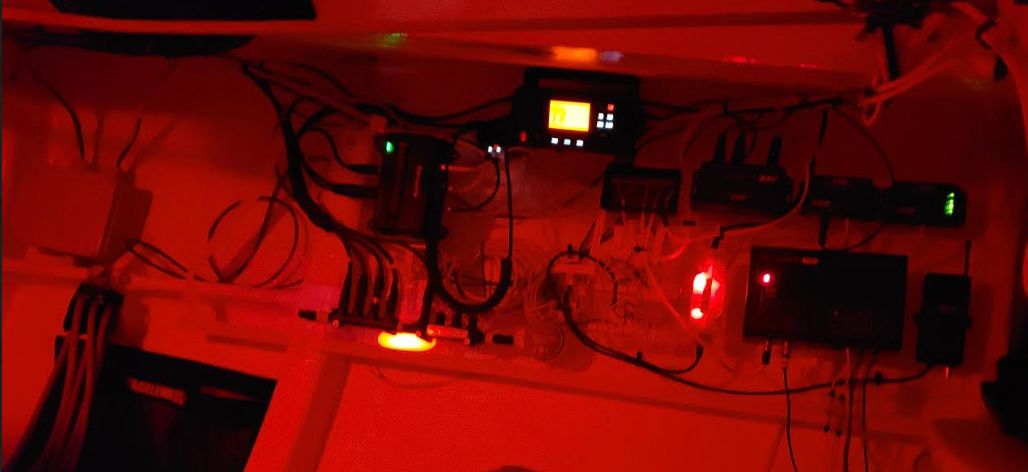
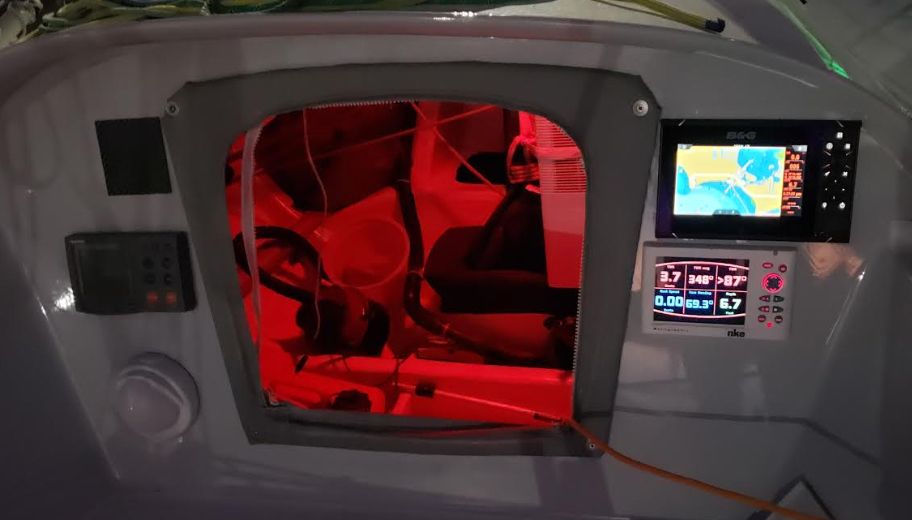
The instruments seemed to be vulnerable so my wife Jamie made me a water proof cover!
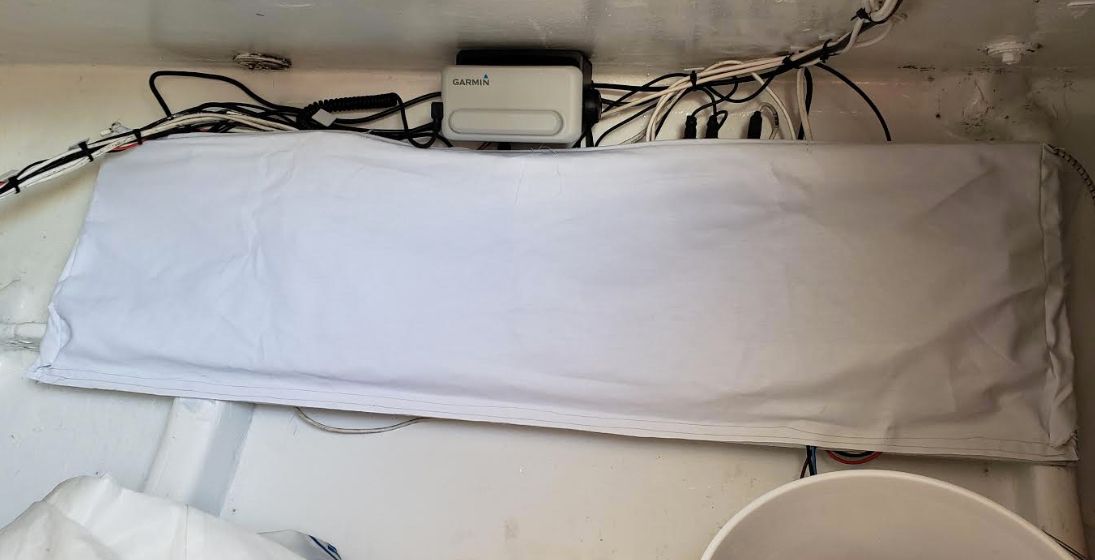
The last item was boat lights. I learned that none of the navigation lights worked. There were mast head tri-color lights. The masthead unit had some holes drilled in it and water intrusion destroyed them. So I installed some new lights. I decided to go with deck lights so that I could save the weight of the mast wire.

I actually drove back to the dock to see the lights at night!
If can be broken I guess I can break it!
I was sailing a local race in Tampa Bay when we hear a crunch as we immediately rounded up. Quick sails down. What happened? Well I broke a rudder!
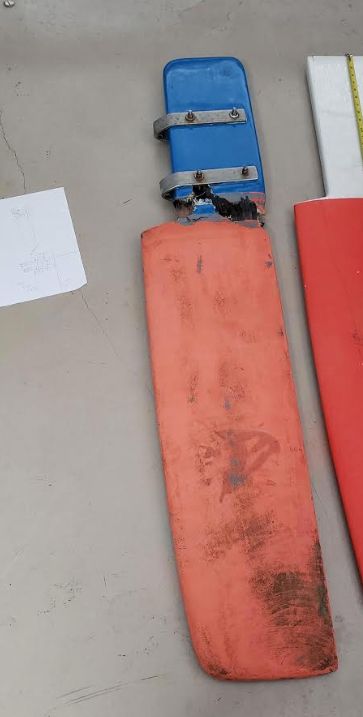
The rudder simply snapped as you can see above. It turns out the rudder had rotted from the inside. All the wood was rotten from the core. Incoming, two new rudders. After much debate I ended up ordering two new rudders from Structures, the manufacture of the Pogo 3.
I expect the new rudders in early February 2020. Here is what they will look like.
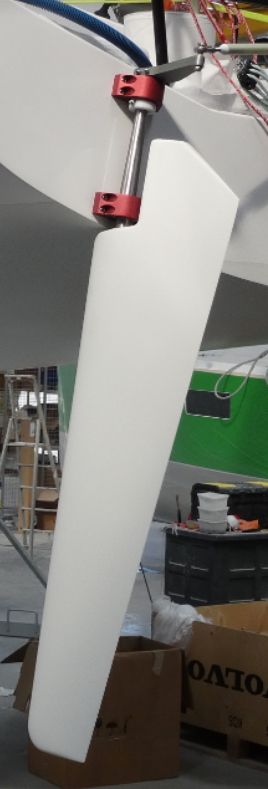
SAILS and Sailing!
Lastly, to date I have added one sail. Evolution Sails were happy to sell me a A5. Here is a picture.


There are so many more details. I will update as I go. I will add to this post for solar and fuel cell info soon.
Future plans: Sail the Pacific Cup Double Handed.